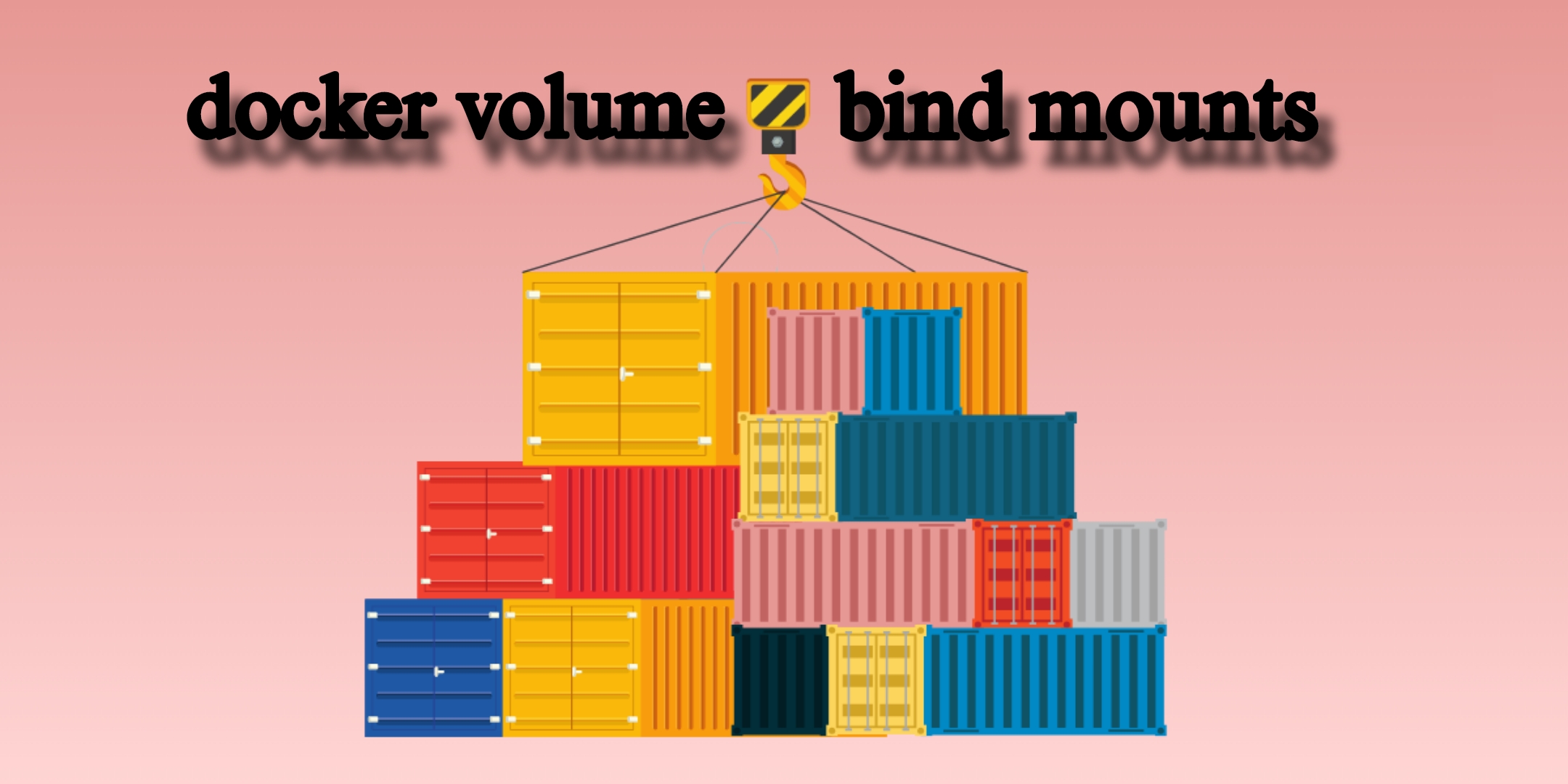Docker Storage Solutions : Understanding Volumes and Bind Mounts 💾 | 🗂️
 RAKESH DUTTA
RAKESH DUTTA
Although bind mounts are dependent on the host machine's directory structure and OS but volumes are completely managed by Docker. Volumes have several advantages over bind mounts like Volumes are easier to back up or move than bind mounts. We can manage volumes using Docker CLI commands or the Docker API.
Bind Mounts : They mount a file or directory from the host machine into a container and are referenced by their absolute path on the host machine. Bind mounts are more limited in functionality than volumes and depend on the operating system and directory structure of the host machine. They can be more difficult to back up or move than volumes.
Volumes : These are data storage areas that are fully managed by Docker and are independent of the host machine's operating system and directory structure. When a volume is used, a new directory is created within Docker's storage directory on the host machine and Docker manages the contents of the directory. Volumes are easier to back up or move than bind mounts and can be more securely shared between multiple containers. Volumes can be managed using Docker CLI commands or the Docker API which is compatible with both Windows and Linux containers.
Differences of Docker volume and Bind mount
In Docker, volumes and bind mounts are both used to persist data but they have some key differences.
Docker volumes are managed by Docker itself Docker creates and maintains a separate storage area for these volumes, making them more suitable for sharing data between multiple containers. Volumes are independent of our host's file system offering a more flexible and Docker-controlled approach to managing data storage. With bind mount we can directly link a file or directory from our host computer to a Docker container which allows us to see changes made to the host reflected inside the container while specifying the correct path to the host.
DOCKER VOLUME
Recommended storage method : Docker volumes are the preferred way to store data created and used by Docker containers.
Interaction : Volumes can be managed using Docker CLI commands and APIs.
Mounting : You only need the volume name to mount it to a container.
Storage location : Volumes are stored in the /var/lib/docker/volumes directory on the host machine.
BIND MOUNTS
Basic Features : Bind mounts have been available since the first version of Docker.
Comparative utility : Bind mounts are generally considered less useful than volumes in many use cases.
CLI Access : Bind mounts cannot be managed directly using Docker CLI commands.
Host System Access : We can work directly with bind mount on the host system.
Mounting path : When using bind mount we have to provide the exact path to the file or directory on the host computer.
Location Flexibility : A binding mount can be located anywhere on the host machine.
What is a Docker Volume ?
Docker volumes are a way to store data used by Docker containers. Unlike bind mounts, Docker manages these volumes entirely depending on the host's file system. Volumes are easy to back up and share between containers, and they work well with both Windows and Linux containers. For example, we use volumes to store application data like documents or database files, and we can easily back up or restore this data. Docker volumes perform better than bind mounts on Windows and Mac, and we can use volume drivers to add additional features like encryption or cloud storage.
Advantages Of Docker Volumes
Ease of management : Docker fully manages volumes so it's easy to create, back up, and restore. We can use Docker CLI or API commands to manage them.
Portability : Volumes are separated from the host system's file structure, making backups and migrations easier.
Performance : Volumes generally offer better performance than bind mounts, especially on Windows and Mac systems.
Advanced features : Docker volumes support features like encryption, external storage, and can be managed with volume drivers for added functionality.
Compatibility : Works well with both Windows and Linux containers, providing a consistent experience across different environments.
Sharing : Safe and easy to share volumes between multiple containers with changes visible in real-time.
Disadvantages of Docker Volumes
Complexity : Managing volumes can be more complicated if you are not familiar with Docker's CLI or API.
Portability issues : Moving volumes between different Docker environments can be challenging, especially if storage drivers or settings change.
What is a Bind Mount ?
A bind mount mounts a specific file or directory from our host machine directly to a Docker container using its correct path. This approach was used early in Docker and is useful for local development as it allows us to work with host files directly in the container. However bind mounts can be difficult to manage, less secure and can affect performance, especially with large data volumes.
Advantages of Bind Mounts
Direct Access : Provides direct access to the host file system, allowing real-time updates and immediate reflection of changes inside the container.
Local Development : Ideal for development environments where you need to work directly with host files without rebuilding the container.
Simplicity : Easy to set up and use in straightforward use cases where specific host directories or file links are required.
Disadvantages of Bind Mounts
Security risks : Bind mounts can create security risks by exposing host files and directories to containers, potentially leading to accidental or malicious file access.
Performance : May suffer from performance issues, especially with large data volumes or high-frequency file changes.
Backup and portability : Backing up and moving are harder than Docker volumes as they depend on the host's file system and path structure.
Complexity in management : Managing bind mounts can be cumbersome, especially when many mounts or paths are changed.
Overall, so it's docker volume vs bind mount. Docker volumes are the recommended method for storing data created and used by Docker containers, using volumes and bind mounts has existed since the first version of Docker. Comparatively speaking, bind mounts are less efficient than volume.
Subscribe to my newsletter
Read articles from RAKESH DUTTA directly inside your inbox. Subscribe to the newsletter, and don't miss out.
Written by
